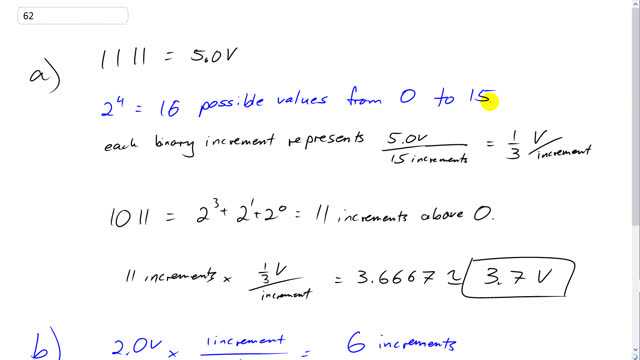
Consider a rather coarse 4-bit analog-to-digital conversion where the maximum voltage is 5.0 V.
- What voltage does 1011 represent?
- What is the 4-bit representation for 2.0 V?

In order to watch this solution you need to have a subscription.
This is Giancoli Answers with Mr. Dychko. With a four bit binary number there are two to the power of four or sixteen possible values going from zero to 15. So each binary digit represents an increment above zero. And so there are there are 15 increments above zero. So there are there are 16 discrete values and 15 increments above zero. So five volts is the fifteenth increment. So there are five volts in all the increment. So it has five volts in the 15 increments because it is only a maximum of 15 increment above zero. So that's one third of a volt per increment. And so when you have this number here that's two to the power of three plus two to the power one plus two to the power of zero which is 11 increments above zero. So 11 increments times a third of a volt per increment is 3.7 volts. And to convert two volts into binary we need to know how many increments that is. And so that's two volts times one increment for every one third volt which is six increments. And so we need the binary representation of the decimal number six which is this because this is two the power of zero this represents two to the part of one and this two represents two power two. So this is a decimal number four for that placed value plus two which make six.